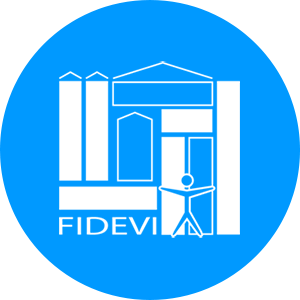Fidavi, a term that echoes through the corridors of the digital realm with a blend of curiosity, excitement, and skepticism. In the ever-expanding universe of cryptocurrencies, Fidavi stands as a beacon of innovation and controversy. Its journey from obscurity to prominence has been nothing short of captivating, leaving enthusiasts and skeptics alike pondering its significance in the financial landscape. This article embarks on a comprehensive exploration of Fidavi, delving into its origins, mechanics, societal implications, and the challenges it faces as it charts its course into the future.
Genesis of Fidavi: A Tale of Innovation and Ambition
The genesis of Fidavi can be traced back to the visionary minds seeking to redefine the concept of currency in the digital age. Emerging from the shadows of Bitcoin and Ethereum, Fidavi was conceptualized as a decentralized, peer-to-peer digital currency with a mission to revolutionize transactions and empower users with financial autonomy. Drawing inspiration from the principles of blockchain technology, Fidavi aimed to address the shortcomings of traditional financial systems while fostering a community-driven ecosystem.
Understanding the Mechanics: Decoding the Fidavi Protocol
At the heart of Fidavi lies a sophisticated protocol designed to ensure transparency, security, and efficiency in transactions. Utilizing a consensus mechanism known as proof-of-stake, Fidavi leverages the collective computing power of its network participants to validate and record transactions on its blockchain. This decentralized approach eliminates the need for intermediaries, reducing transaction costs and mitigating the risks associated with centralized authorities. Furthermore, Fidavi employs advanced cryptography techniques to safeguard the integrity of user data and prevent unauthorized access, ensuring trust and reliability in its ecosystem.
The Rise of Fidavi: Navigating the Cryptocurrency Landscape
In recent years, Fidavi has emerged as a formidable player in the cryptocurrency landscape, captivating the attention of investors, technologists, and policymakers alike. Its meteoric rise in value and market capitalization has sparked fervent debates about its potential to disrupt traditional financial systems and reshape the global economy. Advocates tout Fidavi as a catalyst for financial inclusion, enabling individuals around the world to participate in the digital economy and escape the constraints of traditional banking systems. However, critics raise concerns about the volatility and regulatory uncertainties surrounding Fidavi, warning of the potential risks it poses to investors and financial stability.
Read More: Unlocking the Mysteries of Fidavi: A Journey right into a World of Wonder
Exploring Use Cases: From Payments to Smart Contracts
Beyond its role as a digital currency, Fidavi boasts a diverse array of use cases spanning various industries and applications. From facilitating cross-border payments and remittances to enabling decentralized finance (DeFi) solutions, Fidavi offers a versatile platform for innovation and experimentation. Smart contracts, powered by Fidavi’s blockchain, enable the execution of programmable agreements without the need for intermediaries, revolutionizing industries such as supply chain management, real estate, and digital identity verification. Furthermore, Fidavi’s scalability and interoperability make it an attractive option for developers seeking to build decentralized applications (dApps) and blockchain-based solutions.
Fidavi and Financial Inclusion: Bridging the Divide
One of the most compelling promises of Fidavi is its potential to foster financial inclusion on a global scale. In regions plagued by economic instability, limited access to banking services, and oppressive financial systems, Fidavi offers a lifeline to individuals seeking financial empowerment and autonomy. By providing a decentralized platform for peer-to-peer transactions and access to digital assets, Fidavi enables individuals to bypass traditional barriers and participate in the global economy on their own terms. Furthermore, initiatives such as microfinance and community-driven projects leverage Fidavi’s infrastructure to extend financial services to underserved populations, empowering them to build a brighter future.
Challenges and Controversies: Navigating the Road Ahead
Despite its promising potential, Fidavi faces a myriad of challenges and controversies as it navigates the road ahead. Regulatory scrutiny from governments and financial institutions poses a significant threat to Fidavi’s mainstream adoption, with concerns ranging from money laundering and terrorist financing to consumer protection and market stability. Furthermore, the volatility of Fidavi’s price has raised questions about its suitability as a medium of exchange and store of value, prompting calls for greater stability and regulatory oversight. Moreover, security vulnerabilities and technological limitations present ongoing risks to Fidavi’s ecosystem, highlighting the need for continuous innovation and vigilance in safeguarding user assets and data.
Read More: Exploring Fidavi: Where Finance Meets Advanced Intelligence
The Future of Fidavi: Towards a Decentralized Financial Ecosystem
As Fidavi continues to evolve and mature, its future trajectory remains uncertain yet brimming with potential. Innovations such as scalability solutions, interoperability protocols, and privacy enhancements promise to address existing challenges and unlock new opportunities for Fidavi’s ecosystem. Moreover, collaborations with traditional financial institutions and regulatory bodies hold the key to bridging the gap between the crypto and fiat worlds, paving the way for broader adoption and integration into mainstream financial systems. Ultimately, the success of Fidavi hinges on its ability to navigate regulatory complexities, address technological limitations, and earn the trust of users and stakeholders worldwide.
Conclusion: Embracing the Promise of Fidavi
In conclusion, Fidavi represents a paradigm shift in the way we perceive and interact with money in the digital age. Its decentralized architecture, innovative features, and potential for financial inclusion hold the promise of a more equitable and accessible financial ecosystem for all. However, realizing this vision will require concerted efforts from developers, regulators, and users to address the challenges and controversies that lie ahead. By embracing the principles of transparency, collaboration, and innovation, we can unlock the full potential of Fidavi and pave the way for a more inclusive and resilient financial future.
